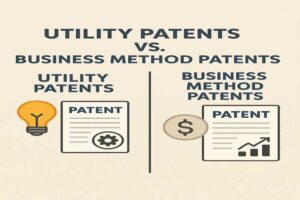In the music industry, publishing rights are one of the most critical and valuable aspects of a song’s copyright. Often less visible to the public, these rights are essential for ensuring that songwriters, composers, and other creators are properly credited and compensated for their work. Publishing rights govern how a song is used, reproduced, and monetized, making them a central pillar in the complex ecosystem of music rights management.
This article delves into the concept of publishing rights, exploring what they entail, how they are managed, the role of music publishers, and the impact these rights have on artists, the music industry, and the public.
1. What Are Publishing Rights?
Publishing rights refer to the rights associated with the musical composition of a song, which includes the lyrics and melody, regardless of the specific recording. When a songwriter or composer creates a song, they own the copyright to this composition. These rights allow the creator to control how their work is used and to collect revenue from its commercial exploitation.
Publishing rights are distinct from master rights, which are the rights to a specific recorded version of a song. For example, if two different artists record a version of the same song, each recording has its own master rights, but the publishing rights to the composition remain the same. The owner of the publishing rights receives royalties whenever the song is reproduced, performed, or otherwise monetized.
2. Components of Publishing Rights
Publishing rights cover several types of usage, each with its own associated royalties.
Here are the primary categories:
a) Mechanical Rights
Mechanical rights allow the copyright holder to collect royalties whenever a song is reproduced, either in physical formats like CDs and vinyl or in digital formats like downloads and streaming. Whenever a user buys, downloads, or streams a song, a mechanical royalty is generated, which is then paid to the publishing rights holder.
In the United States, the statutory rate for mechanical royalties is set by the Copyright Royalty Board (CRB), currently at 9.1 cents per copy for physical and digital reproductions under five minutes, or 1.75 cents per minute for songs over five minutes. For streaming services, the rates are more complex, involving a share of the revenue earned by the platform.
b) Performance Rights
Performance rights allow the copyright holder to earn royalties whenever the song is publicly performed. This can include live performances, radio plays, TV broadcasts, and streaming on platforms like Spotify, YouTube, or Apple Music. Performance rights are managed by Performance Rights Organizations (PROs), such as ASCAP, BMI, and SESAC in the U.S., which collect royalties from venues, broadcasters, and digital services on behalf of songwriters and publishers.
Each time a song is performed publicly, the PROs collect a fee from the venue or broadcaster and distribute these royalties to the song’s publishing rights holders.
c) Synchronization Rights (Sync Rights)
Synchronization rights, commonly known as “sync rights,” allow the song to be used in visual media, such as movies, TV shows, commercials, video games, and online content. Sync rights are valuable because they allow songs to reach a broad audience through visual media, and they often involve a one-time licensing fee along with ongoing royalties.
Unlike mechanical and performance royalties, which are usually standardized and managed by PROs or collection agencies, sync licenses are typically negotiated directly between the publishing rights holder and the media producer, often with the involvement of a music supervisor who matches songs to projects.
d) Print Rights
Print rights apply to the reproduction of sheet music for a song. Though less prominent in today’s digital age, print rights remain relevant for songwriters, particularly in the educational market, choirs, and orchestras. Print royalties are generated whenever sheet music or songbooks containing the composition are sold.
3. How Do Publishing Rights Work?
When a songwriter or composer creates a song, they automatically hold the publishing rights to that composition. However, managing these rights can be complex and time-consuming. As a result, many songwriters and composers assign these rights to a music publisher, who manages the licensing, royalty collection, and other administrative aspects in exchange for a percentage of the earnings, often around 50%.
Here’s how publishing rights typically work in practice:
- Direct Ownership: If a songwriter holds the publishing rights directly, they are responsible for licensing their work, collecting royalties, and handling all legal and administrative duties. While this approach provides greater control and profit, it can be challenging, especially for independent artists.
- Publishing Deals: Most songwriters enter into a deal with a music publisher, who takes over the administrative tasks of licensing, tracking royalties, and ensuring proper payments. In exchange, the publisher usually takes a share of the revenue, which can vary depending on the type of deal.
The publishing rights for a song are often split into two halves: the “writer’s share” and the “publisher’s share.” The writer typically retains the writer’s share, while the publisher collects the publisher’s share. This split ensures that both the creator and the publisher benefit from the song’s success.
4. The Role of Music Publishers
Music publishers play a crucial role in managing publishing rights, acting as intermediaries between songwriters and the industry. They handle the licensing, promotion, and collection of royalties for compositions, freeing songwriters to focus on creating new music. Publishers also help place songs in movies, commercials, and other media, enhancing the visibility of the songwriter’s work.
Types of publishing deals include:
- Full Publishing Deal: The songwriter assigns their publishing rights to a publisher, who takes full responsibility for managing the song and collects a significant portion of the royalties. This type of deal is common for artists seeking extensive support with licensing and promotion.
- Co-Publishing Deal: In a co-publishing deal, the songwriter retains a portion of the publishing rights, often splitting the publisher’s share with the publisher. This arrangement gives the songwriter a greater share of the royalties while still benefiting from the publisher’s services.
- Administration Deal: Under an administration deal, the songwriter retains ownership of their publishing rights while hiring a publisher to handle administrative duties. This type of deal is popular among established artists who want assistance with royalties and licensing but don’t want to give up ownership.
- Single Song Agreement: This deal applies to one specific song rather than the songwriter’s entire catalog. Single-song agreements are common for songwriters who want to license individual songs for particular projects or placements.
5. Revenue Streams from Publishing Rights
Publishing rights generate income from multiple revenue streams, making them a valuable asset for songwriters and publishers alike.
Here’s an overview of the primary revenue streams:
- Mechanical Royalties: Collected from the reproduction and distribution of the song, including digital downloads, streaming, and physical media.
- Performance Royalties: Generated each time the song is publicly performed, whether on radio, TV, streaming platforms, or live venues.
- Sync Fees and Royalties: Earned through licensing songs for use in movies, TV shows, commercials, and other visual media.
- Print Royalties: Collected from the sale of sheet music or songbooks featuring the composition.
In the streaming era, performance and mechanical royalties have become particularly significant, as digital streaming services pay royalties for each play or download. This shift has increased the importance of publishing rights for songwriters and publishers, as streaming platforms contribute a significant portion of the revenue generated from music today.
6. Challenges and Opportunities in Publishing Rights
The rise of digital platforms has transformed the landscape for publishing rights, creating both challenges and opportunities.
Here are some of the key issues facing publishing rights today:
Challenges
- Royalty Distribution: With so many revenue streams and distribution channels, tracking and collecting royalties can be complex. Songwriters sometimes face delayed payments or underpayment, particularly from international markets.
- Streaming Rates: While streaming has boosted accessibility, the royalties paid by streaming services are relatively low compared to traditional mechanical and performance royalties. This has led to debates about fair compensation for songwriters in the digital age.
- Licensing Complexity: With songs used across various digital media, licensing requirements can be complex, and tracking royalties across all platforms requires advanced tools and diligent monitoring.
Opportunities
- Global Reach: Digital platforms enable songwriters to reach a global audience, increasing exposure and potential revenue from publishing rights.
- Sync Licensing Boom: As streaming platforms and online video content expand, demand for music in media has surged. Sync licensing has become an increasingly lucrative revenue stream for songwriters, offering new opportunities for visibility and income.
- Direct Licensing: Some songwriters and publishers are now using blockchain and digital rights management tools to directly license their works, cutting down on intermediaries and ensuring faster payments.
7. The Future of Publishing Rights
As technology advances, publishing rights will continue to evolve, adapting to new platforms, distribution methods, and revenue streams. Music publishers are exploring the potential of blockchain technology to improve transparency, ensuring that songwriters are fairly compensated for each use of their work. Additionally, artificial intelligence is beginning to aid in tracking usage and royalties more accurately across diverse platforms.
The digital era has emphasized the importance of publishing rights in music, as streaming, social media, and online content have created an unprecedented demand for music. Songwriters and publishers who adapt to these changes by leveraging new tools and models can maximize the potential of their publishing rights, reaching wider audiences and generating increased revenue.
The Value of Publishing Rights
Publishing rights form the backbone of the music industry, ensuring that the creators of songs are compensated and acknowledged for their work. From mechanical and performance royalties to sync fees and print royalties, these rights allow songwriters to earn income from their compositions across multiple channels. Music publishers play a vital role in managing these rights, helping to secure placements, collect royalties, and promote.







